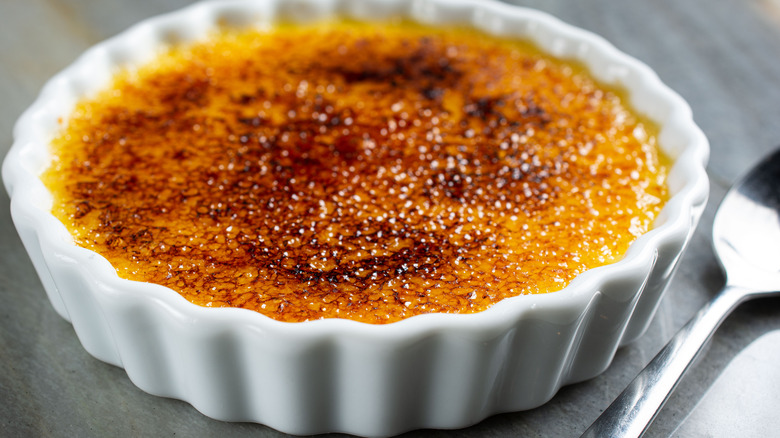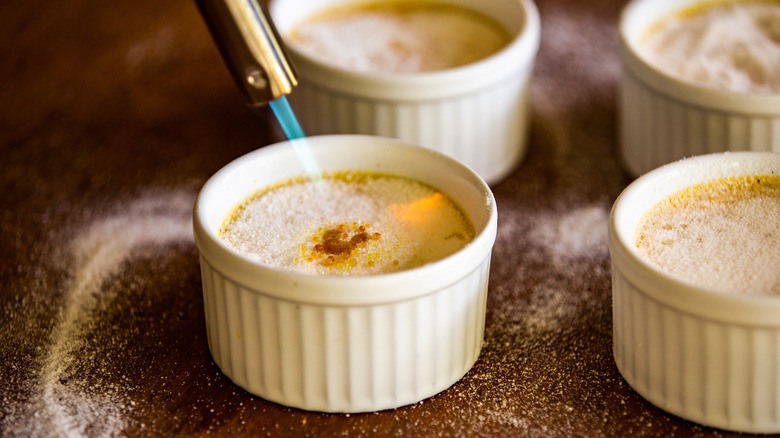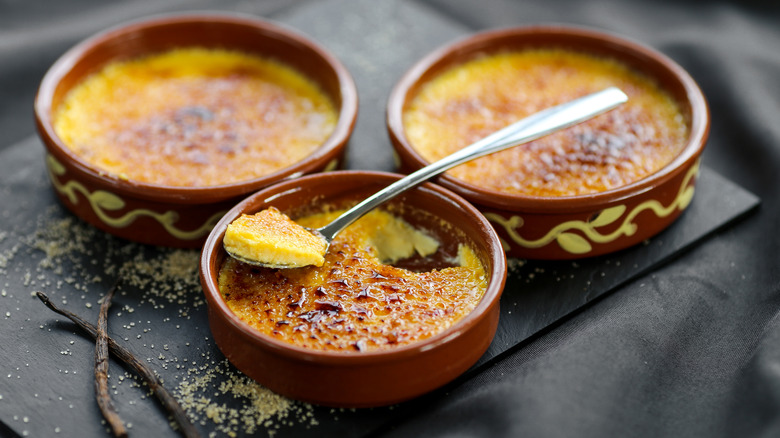The Rotation Technique To Properly Torch Crème Brûlée
Since childhood, you've likely been warned about the dangers of messing around with flames. If you play with fire, as the old saying suggests, you may wind up getting burned. However, when you're in the kitchen, sometimes an open flame is the only way to put the finishing touches on your delectable dishes.
Crème brûlée is one such dish. This dairy dessert can only be completed with a torch. However, going into this step without a game plan is a recipe for failure. Brûlée, after all, is the French word for burnt, so giving your crème a crispy, crackling crust is crucial. Once you've covered your custard with a thin layer of sugar, and lit your kitchen blowtorch, it's simply a matter of keeping the flame moving in a circular pattern. By never allowing the torch to overcook particular places on the sugar coating, you'll prevent the crème brûlée from burning and ensure an aesthetically pleasing and flavorful final product.
Keep it moving
When you want to put the finishing touches on a perfect crème brûlée, you're probably going to want to keep the flame moving. Making crème brûlée is definitely among the best uses for a culinary torch but understanding and utilizing the proper technique with the tool is of the utmost importance.
First and foremost, you don't want to touch the flame directly to the top of your crème brûlée's custard base. You should keep the torch a few inches above the sugar it's meant to caramelize. The next part of this process is where the rotation aspect comes into play. Move the torch in a circular motion around your crème brûlée for a couple of minutes. This technique will help to ensure that all of the sugar has the same amount of time exposed to the open flame, which is how this dessert gets its signature crispy cover. Rotation aids in making a consistent coating on your crème brûlée, essential for not only the flavor but the dessert's visual appeal as well.
Completing your crème brûlée
After taking this step, it can be difficult to discern if you've adequately caramelized your custard. While torching your dessert a touch more is always an option, burning the brûlée isn't an error that can be easily resolved. As such, err on the underdone side of the spectrum. It is suggested that you re-refrigerate your freshly torched crème brûlée, which will allow the custard to cool down again and give you a better sense of how well your rotating torch technique worked.
If you're still hesitant to use a torch, it might be beneficial for you to try the tool out a few times before you take it to the dessert. You can get a few practice attempts in by sprinkling a small amount of sugar onto a baking sheet. Take your torch to this sprinkled sugar until it begins to bubble and brown. You can use this practice method to try out the rotation technique but you need to be wary of the baking tray's temperature to avoid burning yourself. Once you've practiced enough, you can drop the baking tray into water, which will eventually cause the caramelized sugar to dissolve. Mastering this rotation technique could be the best way to torch your crème brûlée into a masterpiece.


